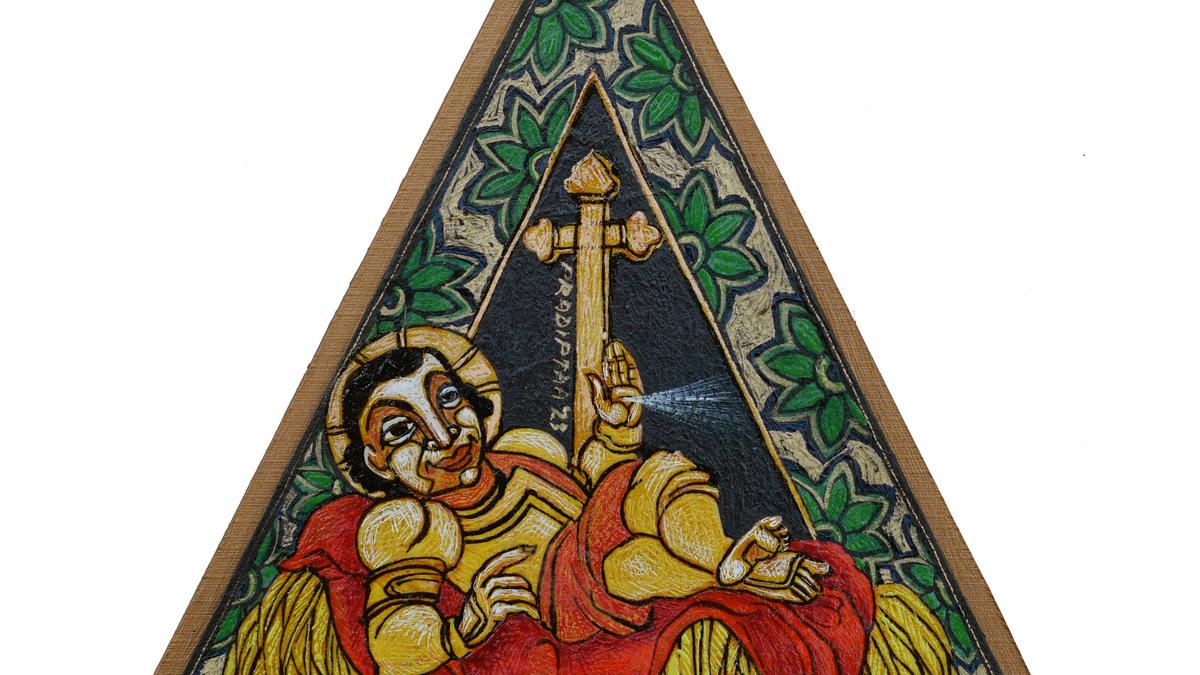
Delhi’s hosts a unique Christmas ornaments art exhibition by 49 renouned artists
The Hindu
Experience a contemporary twist to traditional Christmas art & aesthetics at Dhoomimal Art Centre's 'Away in a Manger' exhibition.
To bring in the festive cheer, the capital’s Dhoomimal Art Centre has a new show called Away in a Manger, that gives a contemporary twist to the traditional art and aesthetics associated with Christmas. The exhibition displays Christmas ornaments by 49 renowned artists, and larger-than-life Christmas trees.
Georgina Maddox curated the show after the art gallery director Mohit Jain sent out invitations to artists requesting them to showcase their interpretations of Christmas. “It is wonderful to celebrate festivals in an art space; the show underlines the plurality of our nation in a light-hearted manner without losing the essence of the festivities,” says Georgina, who took three months to put it together.
In the true Yuletide spirit of giving, the exhibition offers masterful art at accessible prices, ranging from ₹8,000 to ₹30,000. “The exhibition not only makes for a memorable journey but also is a chance to collect unique pieces that transcend generations,” says Mohit.
Artist Vasundhara Tewari Broota has painted a gold leaf-covered reindeer in the snow, with the sky filled with stars and decorative elements. The red, gold and silver colours in each work evoke the Christmas spirit. “It is a good idea to celebrate all festivals and bring their culture into the gallery space. It has been a refreshing experience for me painting on unusual shapes and sizes,” she says.
Kanchan Chander, known for her energetic and imaginative fusing of popular culture with high art, has depicted her Christmas experience in a selection of festive motifs. Abbas Batliwala attributed his trademark, the peeping eye, to the visage of Santa Claus. In another work, he portrays Christmas gifts. Shahid Parvez has worked with the image of Santa Claus on his sleigh and in his inimitable style created a vigorous collage of imagery to convey the spirit of the festival. “My paintings radiate the vibrant spirit of love, joy, and happiness—a visual celebration echoing the warmth of Christmas festivities,” he says.
For Seema Kohli, who painted a winged angel against a star-studded blue sky, the exhibition brought back childhood memories of working on an ornament meant for Christmas. “I was very intrigued by the idea, and liked the material and the size. I enjoyed the process and chose a hexagon as I found it quite interesting,” she says. Swapan Bhandary’s work reminds viewers of the stained-glass artwork that was typical of the pre-Renaissance era.
Since childhood, Christmas has always been exciting for Megha Joshi, who believes that its spirit permeates religious differences. “I added Islamic motifs and Hindu ritual materials to the decorations, celebrating a common faith of humans,” says Megha. Capturing the essence of the Divine, Shalini Prakash created everyday items, such as a lamp, clock, and an angel, giving them a tone of the fantastical and heavenly. Tanushree Chakraborty’s mother and child (The Madonna and Baby Jesus) in her characteristic style motifs is another eye-catcher.

Hampi, the UNESCO-recognised historical site, was the capital of the Vijayanagara empire from 1336 to 1565. Foreign travellers from Persia, Europe and other parts of the world have chronicled the wealth of the place and the unique cultural mores of this kingdom built on the banks of the Tungabhadra river. There are fine descriptions to be found of its temples, farms, markets and trading links, remnants of which one can see in the ruins now. The Literature, architecture of this era continue inspire awe.

Unfurling the zine handed to us at the start of the walk, we use brightly-coloured markers to draw squiggly cables across the page, starting from a sepia-toned vintage photograph of the telegraph office. Iz, who goes by the pronouns they/them, explains, “This building is still standing, though it shut down in 2013,” they say, pointing out that telegraphy, which started in Bengaluru in 1854, was an instrument of colonial power and control. “The British colonised lands via telegraph cables, something known as the All Red Line.”









